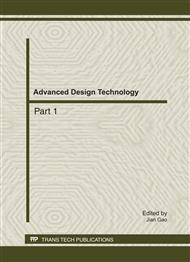p.2152
p.2161
p.2168
p.2173
p.2180
p.2187
p.2191
p.2195
p.2201
Effects of Aging and Temperature on the Oriental Growth of Hydroxyapatite
Abstract:
In order to find a simple way to prepare oriental HA, only by controlling the preparation conditions, a co-precipitation method was used to prepare an oriented HA. The influences of temperature and aging on its directional growth were investigated kinetically and thermodynamically. The chemical composition was characterized by X-Ray diffraction and Fourier transform infrared. The morphologies were observed by scanning electron microscopy (SEM). The oriented parameters of HA (c/a) were calculated by Scherrer equation. The results show that the temperature rise in the process of synthesis, aging or calcining inhibited the growth of HA crystal in the direction of c-axis. Aging for 24 h benefited the growth along c-axis, whereas aging for 36 h was in favor of the decreasing of the c/a value. The supernatant-replacement during aging exerted the same effect on the growth with the rising of temperature. The SEM analysis result shows that the morphology of the produced HA particles looked like a uniform needle shape and had a good dispersion.
Info:
Periodical:
Pages:
2180-2186
Citation:
Online since:
August 2011
Authors:
Price:
Сopyright:
© 2011 Trans Tech Publications Ltd. All Rights Reserved
Share:
Citation:


